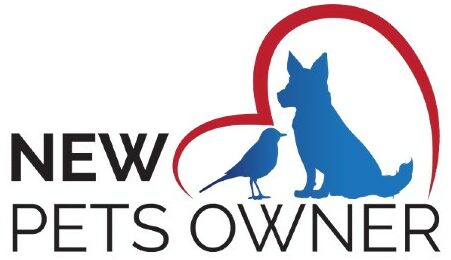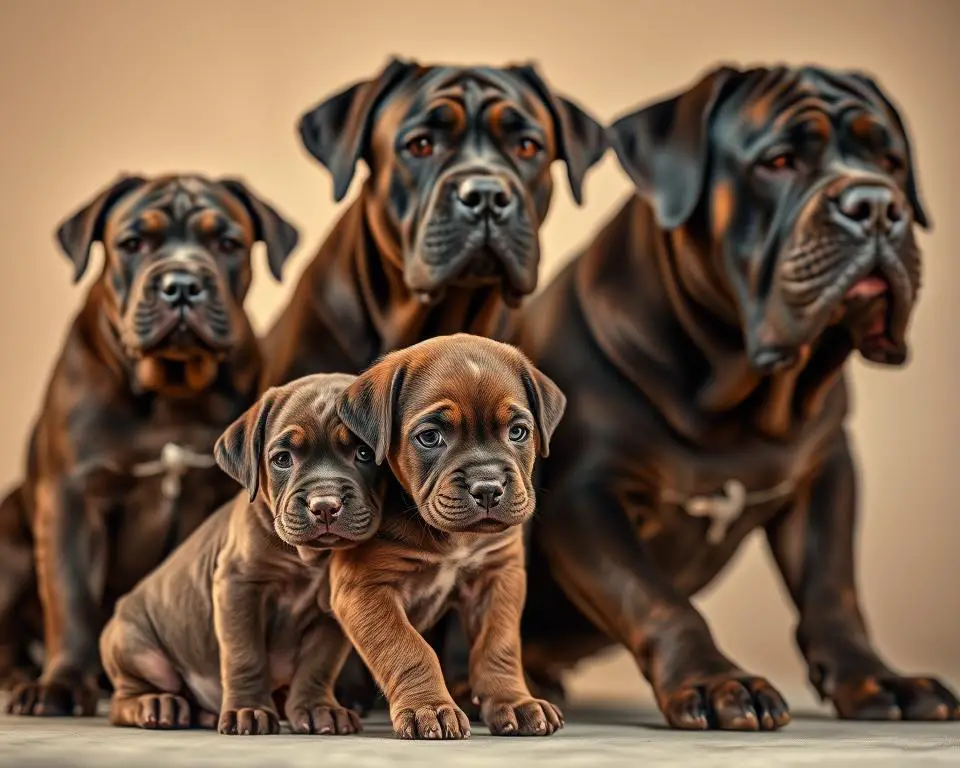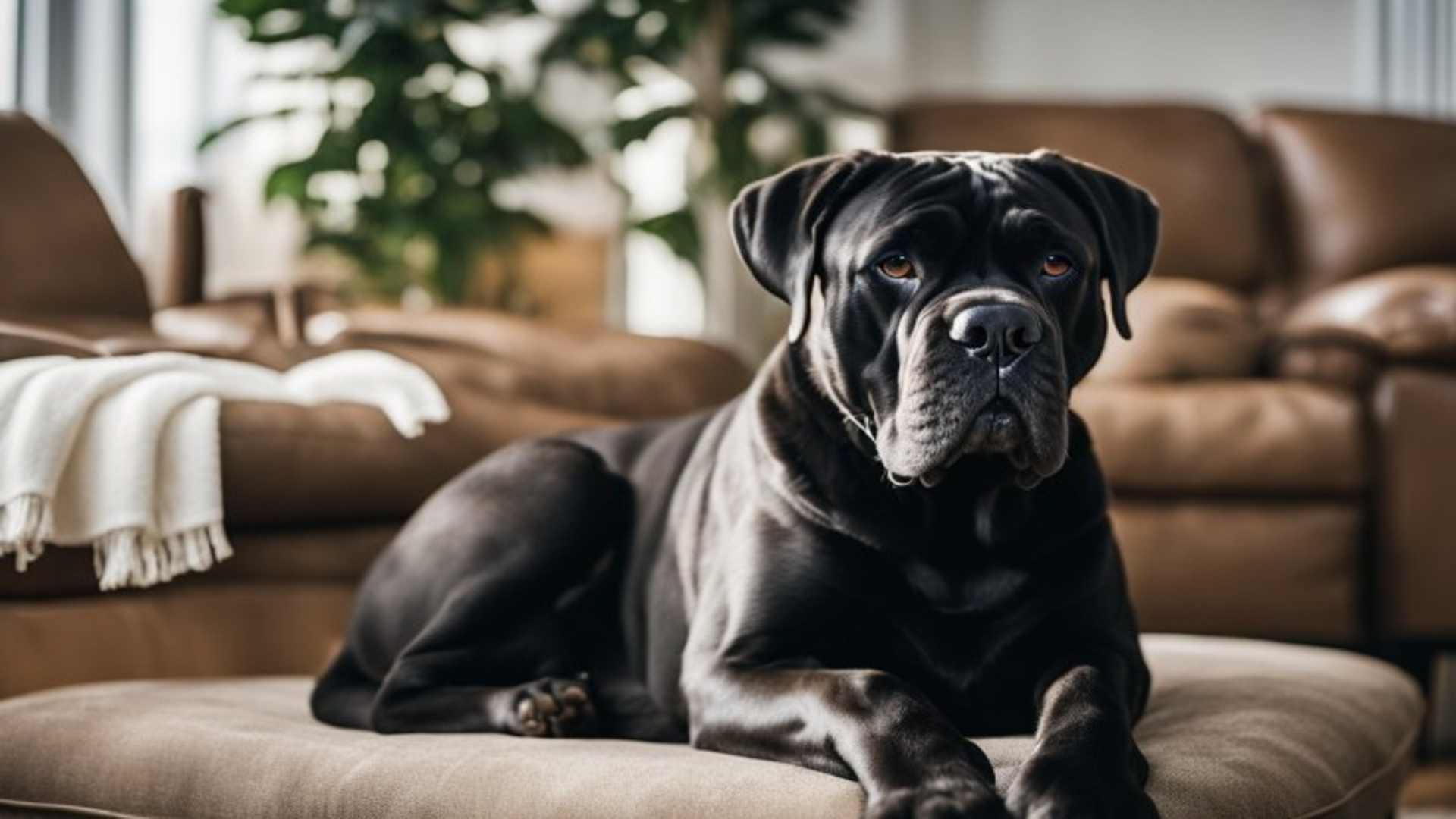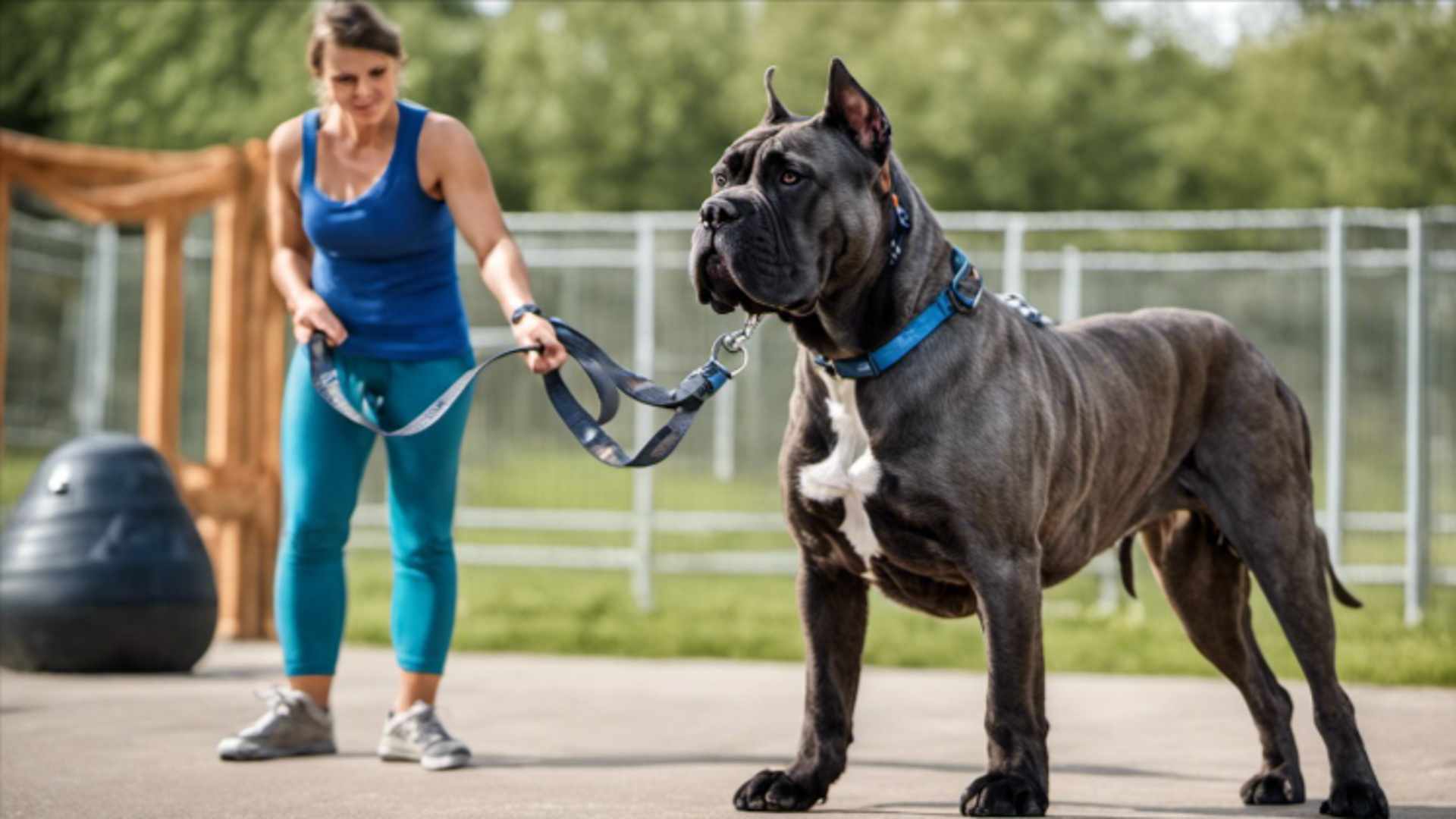Are you in the market for a new furry companion and considering a Boerboel or Cane Corso? Both breeds are known for their impressive stature and protective instincts, but which one is right for you?
In this article, we will compare and contrast the traits and temperaments of Boerboels and Cane Corsos to help you decide which breed best fits you.
If all this sounds interesting to you and is something you’d like to learn more about, keep reading to find out all the differences between Boerboels and Cane Corsos.
Cane Corso vs boerboel: Overview
Cane Corsos and Boerboel are two large and powerful dog breeds that share similarities in appearance and temperament but have distinct differences in their origins and purposes.
Both breeds are known for their loyalty, protectiveness, and strength, making them well-suited for roles such as guarding and companionship.
However, understanding their unique traits, physical characteristics, and breed histories is essential when deciding which of these dogs might be the best fit for your household.
When comparing the two breeds, potential owners should consider factors such as size, temperament, and maintenance needs to determine the most suitable match for their lifestyles and living environments.
The Boerboel and the Cane Corso require strong leadership, consistent training, and socialization to thrive as family pets.
Cane Corso size comparison
To make it easier for you to compare the two, here’s a quick summary of the key differences between Boerboel and Cane Corso:
| Category | Boerboel | Cane Corso |
|---|---|---|
| Origins | South Africa | Italy |
| Physical Characteristics | Short, smooth coat; lighter color; muscular; 150-200 lbs; 22-27 inches | Short, thicker, stiffer coat; multiple colors; 90-120 lbs; 23-28 inches |
| Temperament | Confident, protective, affectionate, intelligent | Confident, loyal, reserved with strangers, intelligent |
| Training and Obedience | Responds well to obedience training; food-motivated | Quick learner; excels in obedience training; eager to please |
| Health and Lifespan | Hip dysplasia, elbow dysplasia, eye issues, heart problems; 10-12 years | Hip dysplasia, elbow dysplasia, cherry eye, bloat; 9-12 years |
| Maintenance and grooming | Regular brushing, occasional bathing; low-maintenance | Regular brushing, regular bathing; low-maintenance |
Background and origins
Boerboel and Cane Corso are powerful and muscular dog breeds, but each has unique origins and characteristics.
Boerboel
The Boerboel is a relatively heavy mastiff breed that hails from South Africa, dating back more than a hundred years. Initially bred as a hunting dog, it later transitioned to being more of a guard dog.
Boerboels were developed as working farm dogs and protectors of homesteads, specifically to guard families and properties against wild animals and human intruders. They are known for their incredible strength, agility, and loyalty to their owners.
Boerboel appearance is characterized by a short and smooth coat, usually lighter in color, with the ability to reach 150-200 pounds in weight and a height of 22-27 inches.
The breed is muscular with good muscle development, built to be strong and robust.
Cane Corso
Originating from Italy, the Cane Corso is a large and muscular dog breed with a history of being used for various tasks, including guarding property, livestock, and even as a war dog. The breed’s name is derived from the Latin ‘Cohors,’ meaning ‘protector’ or ‘guardian.’
Cane Corsos have been known for their versatility, strength, and intelligence, making them highly valued as working dogs throughout history.
The Cane Corso’s appearance is characterized by a short yet thicker and stiffer coat, available in multiple colors, including black, red, fawn, and gray.
In terms of physical size, they are generally smaller than Boerboels, weighing between 90 to 120 pounds and reaching a height of 23 to 28 inches.
One distinctive feature of the Cane Corso’s head is its longer head and muzzle, setting it apart from the Boerboel’s shorter head and muzzle.
Physical characteristics
The Boerboel and Cane Corso are large, powerful dog breeds with many physical similarities. However, there are distinct differences in their builds, coat coloring and texture, and other physical characteristics.
Size and build
The Cane Corso and the Boerboel are large dog breeds but have slightly different sizes and builds.
The Cane Corso typically stands between 24 to 27 inches tall, measured from their paws to their shoulders, while the Boerboel is slightly taller, ranging from 24 to 28 inches in height.
Note: Regarding weight, the Cane Corso usually weighs between 99 to 110 pounds, while the Boerboel is significantly larger, with an adult weight range of 154 to 200 pounds.
Coat and colors
The coats of the Cane Corso and the Boerboel differ in texture. The Boerboel has a short and smooth coat, while the Cane Corso has a short but thicker and stiffer coat.
Color-wise, Boerboels are usually lighter in color, while Cane Corsos can also be black. However, Cane Corsos can also be found in red, fawn, and gray colors.
Interestingly, one of the top ten Cane Corso facts indicates that their lifespan may be linked to their color, so it’s important to bear that in mind.
Temperament and personality
When comparing the Boerboel and the Cane Corso, it’s essential to understand their temperament and personality traits, as both of these breeds are large, powerful dogs that demand responsible ownership.
Boerboel traits
The Boerboel is known for its confident and stable temperament. They are generally good with children and can form strong bonds with their family members.
These dogs are affectionate and fiercely protective, which makes them excellent family guardians.
It’s important to note that the Boerboel requires consistent training and socialization from a young age to ensure that they become well-rounded, manageable dogs.
Some key personality traits of Boerboels include:
- Confidence
- Protectiveness
- Affectionate
- Strong-willed
- Intelligent
Despite their imposing appearance, Boerboels have playful and silly sides, especially with their family members.
Cane Corso traits
The Cane Corso is also a confident breed, but they can be more reserved and cautious than the Boerboel.
They are known for their loyalty and protectiveness toward their family, but they might take some time to warm up to strangers.
As with the Boerboel, early socialization and consistent training are essential to ensure a well-behaved Cane Corso. Properly trained, these dogs can make excellent family protectors.
Some key personality traits of Cane Corsos include:
- Loyalty
- Alertness
- Reserved with strangers
- Intelligence
The Cane Corso tends to be quicker to react to strangers and potential danger, while the Boerboel takes a more measured approach and assesses the situation before deciding how to act.
Training and obedience
When comparing the Boerboel and Cane Corso breeds, it is essential to understand these dogs’ training and obedience aspects.
Both breeds are strong and powerful but differ in their learning and obedience approaches.
Cane Corsos are quick learners and excel in obedience training. They are often food-motivated, making the use of treats as rewards for good behavior an effective training method.
Due to their eagerness to please their owner, Cane Corsos can also learn tricks relatively easily.
Obedience training is particularly important for this breed, as they react to potential dangers more quickly than Boerboels and can be more difficult to control if not adequately trained.
On the other hand, Boerboels were initially bred for herding and farm work. They are also eager to please their owners and can be effectively trained using similar methods to those recommended for Cane Corsos, such as obedience training and offering rewards
However, the Boerboel breed is usually more patient and assesses a situation before taking action, making it somewhat easier to manage than Cane Corsos.
Although both breeds can be trained effectively, it is crucial to start their training early and maintain consistency.
Socialization is also essential for both Boerboels and Cane Corsos, as it helps them become well-rounded canines and ensures they can interact positively with various environments and other animals.
Health and lifespan
Health and Lifespan
Both the Boerboel and the Cane Corso are generally healthy dogs with relatively long lifespans, but there are some health concerns to be aware of.
Boerboels can suffer from common issues such as hip dysplasia, elbow dysplasia, and hypothyroidism. While these health problems can be managed
Boerboel health
Boerboels are generally healthy dogs with an average lifespan of 10-12 years. Like all large breeds, they can be prone to certain health issues.
Some of the common health concerns for Boerboels include hip and elbow dysplasia, eye issues, and heart problems. To maintain good health, regular vet check-ups, a balanced diet, and proper exercise are essential for this breed.
Here are some common health concerns for Boerboels:
- Hip Dysplasia
- Elbow Dysplasia
- Entropion (inward rolling of the eyelids)
- Ectropion (outward rolling of the eyelids)
- Dilated Cardiomyopathy (heart condition)
Cane Corso health
Cane Corsos have a lifespan of 9-12 years and, similar to the Boerboel, can face certain health issues due to their size.
Some of the common health problems for Cane Corsos include hip dysplasia, elbow dysplasia, cherry eye, and bloat.
Regular veterinary care, appropriate exercise, and a balanced diet can help keep a Cane Corso healthy and happy.
Below is a list of common health concerns for Cane Corsos:
- Hip Dysplasia
- Elbow Dysplasia
- Cherry Eye (prolapse of the third eyelid gland)
- Gastric Torsion (bloat)
- Demodectic Mange (mange caused by mites)
Both Boerboels and Cane Corsos are large, powerful dogs that require attentive care to maintain optimum health.
By keeping up with check-ups, being aware of breed-specific health concerns, and providing a proper diet and exercise regimen, owners can help ensure a long and healthy life for their pets.
Maintenance and grooming
Both the Boerboel and the Cane Corso require regular maintenance and grooming. That said, let’s take a look at some of the breed-specific needs for each one:
Boerboel care
Boerboels have relatively low maintenance requirements, making them a suitable option for individuals seeking a laid-back dog.
These dogs possess short coats, which means they only require occasional grooming to stay clean and healthy.
Brushing your Boerboel a few times a week is enough to maintain its coat and manage to shed, especially during shedding seasons when its shedding increases.
An occasional bath is also recommended when the dog is dirty or working as a farm dog with increased exposure to dirt and debris.
Some other aspects of Boerboel care include:
- Regular nail trimming to prevent overgrowth and discomfort
- Checking and cleaning their ears to prevent infections
- Brushing their teeth to maintain good dental hygiene
Cane Corso care
Like Boerboels, Cane Corsos also have short coat that requires minimal grooming, making them fairly low-maintenance.
A weekly brushing routine is sufficient to keep their fur in good condition and minimize shedding. Regular bathing is essential as well, with the frequency depending on their activity levels and exposure to dirt.
Additional Cane Corso care comprises:
- Trimming their nails regularly to avoid overgrowth
- Inspecting and cleaning their ears to avert infections
- Daily teeth brushing to ensure optimal oral health
In summary, both Boerboels and Cane Corsos have fairly manageable grooming requirements, mainly consisting of regular brushing, bathing, nail trimming, ear care, and dental care.
This makes them suitable for potential dog owners seeking breeds that require minimal grooming efforts.
Ideal living environment
Having a dog requires commitment, so it is important to consider the ideal living environment for each breed.
Boerboel lifestyle
The Boerboel is an intelligent and protective breed, which makes it an ideal family guardian. Since these dogs are large and strong, they require a spacious living environment with a securely fenced yard.
They thrive in various climates, and their short, smooth fur helps them adapt easily to different weather conditions.
Boerboels have a high energy level, requiring daily exercise and mental stimulation to prevent boredom and destructive behavior. Some suggestions for activities include:
- Brisk walks or jogs
- Fetch or tug-of-war games
- Training and obedience sessions
- Dog sports, such as agility or tracking
Cane Corso lifestyle
Like Boerboels, Cane Corsos are also large, intelligent, and protective, which makes them well-suited as family guardians.
However, due to their dense and rougher coat, they may be better suited to cooler climates. A spacious and secure living environment is essential, as they are also strong and muscular dogs.
Regular exercise and mental stimulation are a must for Cane Corsos to keep their bodies and minds healthy. Here are some activities that Cane Corsos might enjoy:
- Long walks or hikes
- Training sessions and obedience work
- Playtime with sturdy toys
- Participation in protection sports or scent work
Summary
Before we move on to the conclusion, we’ve summarized this article into a short list of key points for you to remember:
- Both breeds are known for their loyalty, protectiveness, and strength but have distinct differences in their origins, physical characteristics, and breed histories.
- Boerboels and Cane Corsos have fairly manageable grooming requirements, mainly consisting of regular brushing, bathing, nail trimming, ear care, and dental care.
- Boerboels are generally good with children and can form strong bonds with their family members, while Cane Corsos might take some time to warm up to strangers.
Final thoughts
So, there you have it! We hope this comparison of the traits and temperaments of Boerboels and Cane Corsos has given you a better understanding of these two breeds.
Both are relatively low maintenance, require a secure living environment, and need daily exercise and mental stimulation to stay healthy. Ultimately, deciding which breed best fits your lifestyle and preferences is up to you.
Want to learn more about chinchillas?
Ready to boost your knowledge to the next level? If so, check out the articles below:
- Cane Corso vs. Presa Canario: Ultimate Guide ([year])
- Cane Corso Bite Force vs. Lion: Ultimate Comparison ([year])
- When Do Cane Corso Females Go Into Heat? (Ultimate Guide)





